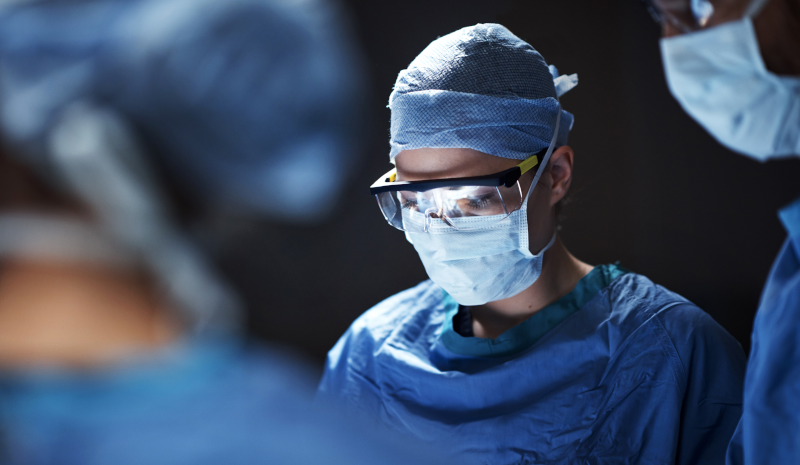Vascular Surgery

About
Our vascular surgeons specialize in the treatment of peripheral arterial and venous diseases. We offer traditional surgery as well as minimally invasive options for the treatment of abdominal and thoracic aneurysms, the carotid artery, occlusive disease of the upper and lower extremity arteries and venous problems, including varicose veins.
Advanced techniques, including laser and mechanical atherectomy and ultrasound-accelerated catheter-directed thrombolysis, are offered in addition to the medical management of peripheral vascular disease together with your primary care physician.
If the signs and symptoms of a vascular condition are present it is important to see a vascular surgeon even when surgery may not be needed. A common vascular condition such as atherosclerosis may show up only in the legs, for example, but negatively affect other areas of the body. Our specialists make sure patients with vascular health issues know and understand all of their options.
Our vascular surgeons also provide vascular intervention for limb salvage purposes.
Hybrid Operating Suite
Our state-of-the-art endovascular hybrid operating room allows our vascular surgeons to perform complex minimally-invasive endovascular, open vascular surgery and hybrid procedures using cutting-edge technology.
Advantages of the Hybrid Operating Room:
- Combines state-of-the-art imaging technologies with a fully integrated sterile surgical operating suite
- Allows for treatment of complex cases using both minimally-invasive and open vascular surgery techniques
- Advanced imaging technology allows surgeons to make real-time care decisions, personalizing care for each patient
- Patients receive lower doses of radiation and contrast agents for increased patient safety
Common vascular conditions:
- Abdominal Aortic Aneurysm
- Aortic Dissection
- Aortoiliac Occlusive Disease
- Arm Artery Disease
- Atherosclerosis
- Carotid Artery Disease
- Chronic Venous Insufficiency
- Connective Tissue Disorder (CTD)
- Deep Vein Thrombosis
- Endoleaks (Type I-V)
- Fibromuscular Disease
- Giant Cell Arteritis
- Hyperlipidemia
- Limb Ischemia
- Mesenteric Ischemia
- Peripheral Aneurysm
- Peripheral Arterial Disease
- Pulmonary Embolism
- Renovascular Conditions
- Stroke
- Thoracic Aortic Aneurysm
- Thoracic Outlet Syndrome
- Varicose Veins
- Vascular Infections
- Vascular Trauma
- Vasculitis
- Visceral Artery Aneurysm
Surgical procedures:
- Spine:
- Anterior Lumbar Interbody Fusion (ALIF)
- oblique lateral interbody fusion (OLIF)
- Basic and Complex Amputation Procedures
- Carotid Endarterectomy
- Carotid-Carotid Bypass
- Carotid-Subclavian Bypass
- Carotid Stenting
- Complex hybrid, open and endovascular surgery
- Trans-Carotid Artery Revascularization (TCAR)
- Thoracic Endovascular Aortic Repair
- Abdominal Aortic Open and Endovascular Repair
- Complex Peripheral Arterial Bypass
- Pedal Access
- Lower Extremity Atherectomy
- Percutaneous Thrombectomy
- Endovascular Renal and Mesenteric Arterial Angioplasty/Stent
- IVC Filter Placement/Removal
- Open IVC Repair
- Vascular Access
Contact Us
Contact Us
Programs and Treatments
Services Offered
What is peripheral artery disease?
Peripheral artery disease (also called peripheral arterial disease) is a common circulatory problem in which narrowed arteries reduce blood flow to your limbs.
When you develop peripheral artery disease (PAD), your legs or arms — usually your legs — don't receive enough blood flow to keep up with demand. This may cause symptoms, such as leg pain when walking (claudication).
Peripheral artery disease is also likely to be a sign of a buildup of fatty deposits in your arteries (atherosclerosis). This condition may narrow your arteries and reduce blood flow to your legs and, occasionally, your arms.
Peripheral artery disease signs and symptoms:
- Painful cramping in one or both of your hips, thighs or calf muscles after certain activities, such as walking or climbing stairs
- Leg numbness or weakness
- Coldness in your lower leg or foot, especially when compared with the other side
- Sores on your toes, feet or legs that won't heal
- A change in the color of your legs
- Hair loss or slower hair growth on your feet and legs
- Slower growth of your toenails
- Shiny skin on your legs
- No pulse or a weak pulse in your legs or feet
- Erectile dysfunction in men
- Pain when using your arms, such as aching and cramping when knitting, writing or doing other manual tasks
If peripheral artery disease progresses, pain may even occur when you're at rest or when you're lying down. It may be intense enough to disrupt sleep. Hanging your legs over the edge of your bed or walking around your room may temporarily relieve the pain.
When to see a doctor
If you have leg pain, numbness or other symptoms, don't dismiss them as a normal part of aging. Call your doctor and make an appointment.













